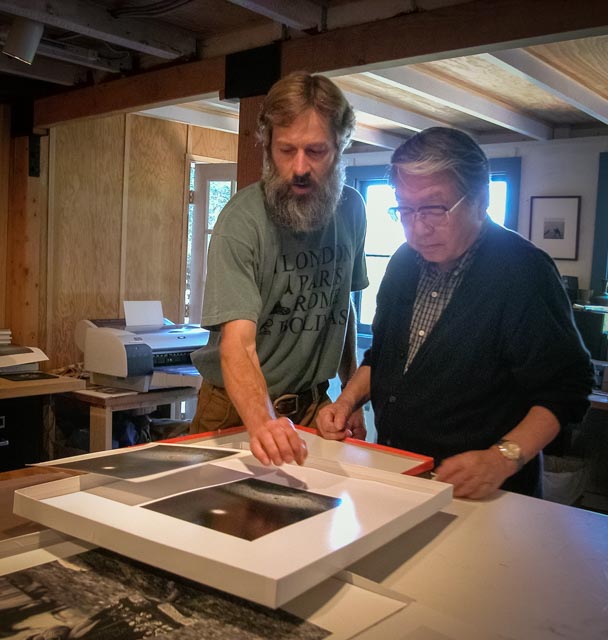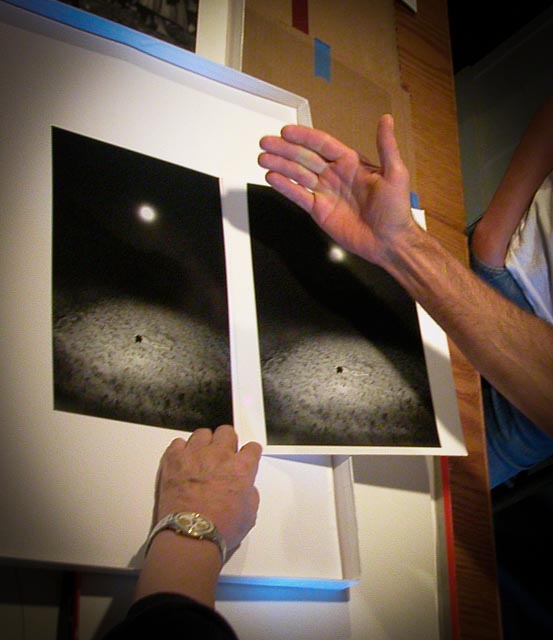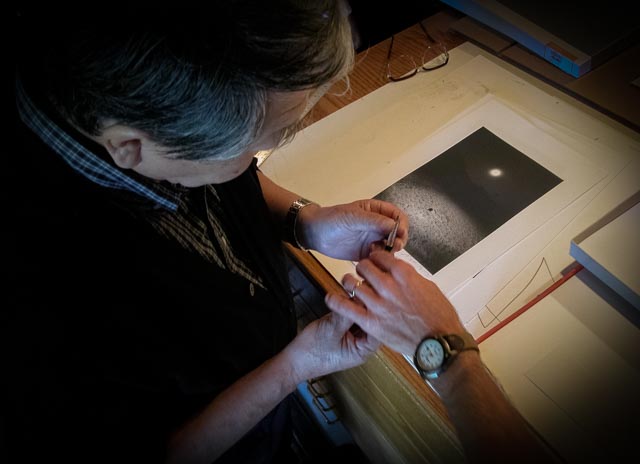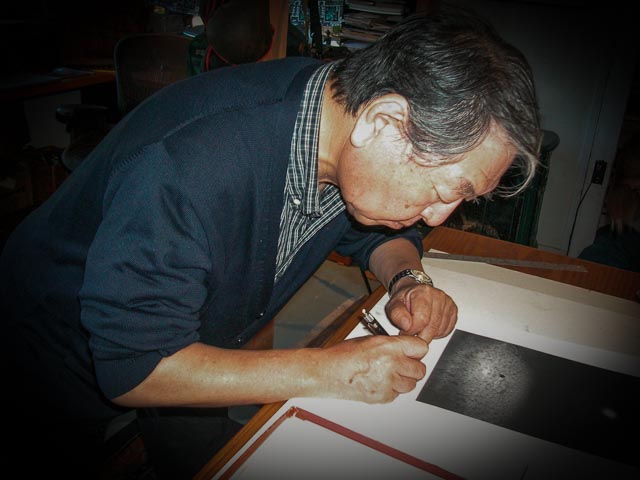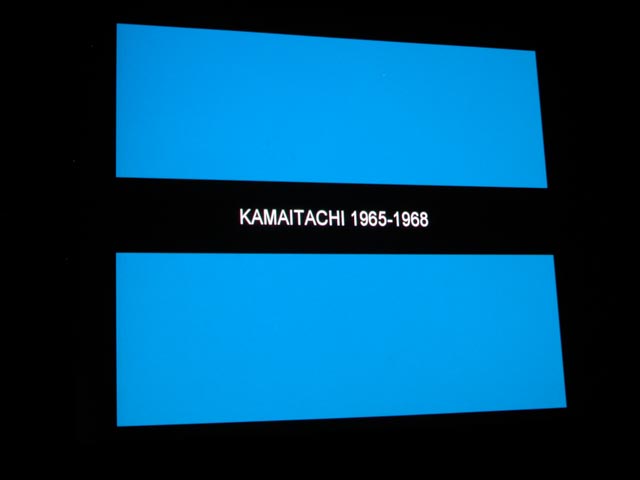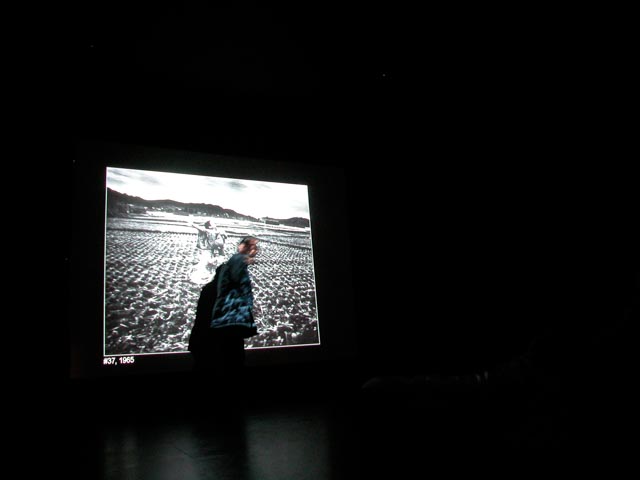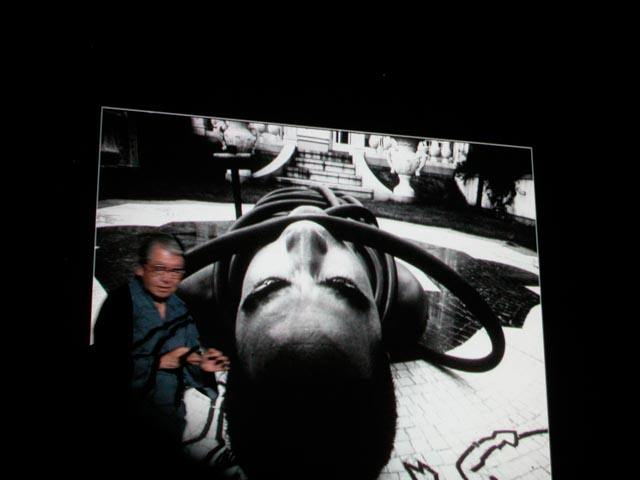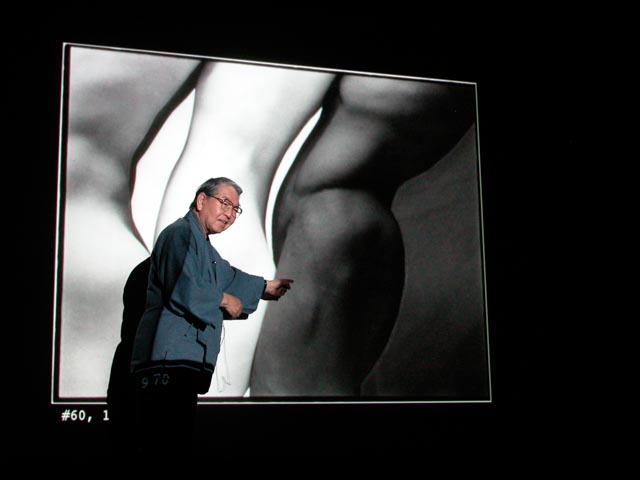Eikoh Hosoe | Kamaitachi #36
Eikoh Hosoe signing PhotoAlliance Collector Prints
Creating the print and Artist Talk
Eikoh Hosoe
Eikoh Hosoe is one of Japan’s most notable post-war photographers and film-makers. Hosoe was born in 1933 in Yamagata prefecture, as Toshihiro Hosoe. He changed his name to Eikoh after the Second World War, to symbolize the new Japan he was photographing. He studied at the Tokyo College of Photography and gained acclaim when he won the Fuji Film Award as a student in 1951. Hosoe graduated in 1954 and become a freelance photographer working for journals and magazines. After taking part in the legendary Eyes of Ten exhibition in 1957, Hosoe formed the VIVO group with fellow photographers including Shōmei Tōmatsu, Kikuji Kawada, Akira Satō and Ikko Narahara.
Hosoe’s photography was often tied to collaboration with his avant-garde group of artist acquaintances. The series Bara-kei (Ordeal by Roses) was created in 1962 with the famous writer Yukio Mishima as a model, and the series Kamaitachi was created with dancer Tatsumi Hijikata in 1969. In addition, Hosoe has been a part of many artist groups and collectives including Demokrato, VIVO, and Jazz Film Laboratory, which he founded. Hosoe is also the director of the Kiyosato Museum of Photographic Arts, established in 1995. Hosoe taught at Tokyo’s School of Photography (from 1969) and College of Photography (from 1975), and he has been the Vice President of the Japanese Photographers Association since 1981.
About the Kamaitachi Series
“Kamaitachi” has traditionally been depicted as a weasel specter with a sharp kama (sickle) in place of each arm. The title also refers to the phenomenon of skin being cut, in the vortex of a small whirlwind, as if struck by the sickle blade limbs of the specter. Hosoe began shooting his “Kamaitachi” series in 1965, with the Butoh dancer Tatsumi Hijikata as its subject. Hosoe shot the series initially in Hijikata’s hometown Akita, then later in Shibamata and Sugamo in Tokyo, as if to trace the photographer’s own postwar trajectory. The series was published as a book in 1969. It overlaid the image of the Kamaitachi on Hijikata, who was searching for his origins within his hometown. It was also a way for Hosoe to come to terms with his own experiences of wartime evacuation in Yamagata. In an interview, he commented, “Where will the wartime experience of evacuation, postwar ruins and experience of living in Tokyo, and the current economic prosperity and peace all go?” Hosoe explained that through the medium of Hijikata’s body, which carries the blood and culture in the Northeast, “I ‘documented’ my ‘memories’.” The resulting works, produced of the relationship between photographer and subject, have a highly narrative quality.
In the village, he played with children, was laughed at by farmers along the roadside, shat in the middle of a field, attacked a bride, kidnapped a baby, and ran through the rural landscape. Almost all the shooting was done guerrilla style in a flash. This was something that could only be achieved through photography. No other medium — film, television, painting, or novel — could have been used in its place. At that moment, I was certain of the superiority of photography.
-Eikoh Hosoe, “Foreword” in Kamaitachi
About the PhotoAlliance Collector Print
In September 2005, Eikoh Hosoe was a visiting artist for PhotoAlliance. During that time he presented a public lecture on his career in photography and visited the Inverness, California atelier of Steven Brock. An early adapter to digital fine printing, Steven assisted Eikoh in one of his first editions of digitally produced prints of the acclaimed Kamaitachi #36 image.
The result is a limited edition series printed uniquely for PhotoAlliance on archival paper and signed and numbered by the artist.
